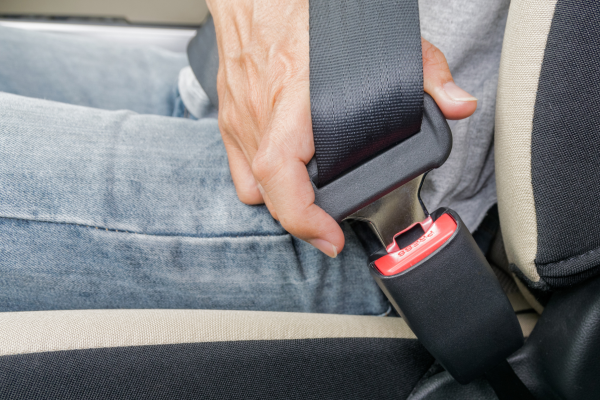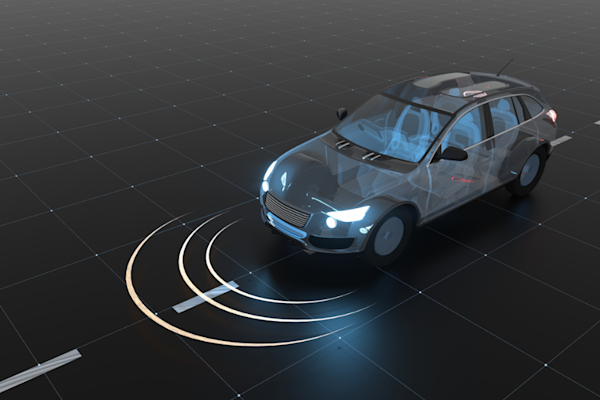Vehicle Safety
Understanding Seat Belt Pretensioners and Buckles: A Detailed Guide

Understanding Seat Belt Pretensioners and Buckles: A Detailed Guide
Seat belts are a crucial safety feature in any vehicle, and their components play a significant role in safeguarding passengers. Among these components, seat belt pretensioners and buckles are essential for ensuring seat belts function effectively during an accident. This guide will delve into what seat belt pretensioners and buckles are, how they work, and why they are vital for passenger safety.
What are Seat Belt Pretensioners?
Seat belt pretensioners are advanced safety devices designed to hold passengers securely in their seats during a collision. Activated by the vehicle's airbag control unit, pretensioners retract the seat belt to eliminate any slack, ensuring the occupant is firmly restrained. This rapid action helps position the passenger properly, enhancing the effectiveness of the seat belt and reducing the risk of injury.
Types of Seat Belt Pretensioners
- Mechanical Pretensioners: Utilize a spring-loaded mechanism to tighten the belt when a collision is detected.
-
- Pyrotechnic Pretensioners: Powered by a small explosive charge that triggers a piston to retract the belt instantaneously.
-
How Do Seat Belt Pretensioners Work?
- The functionality of seat belt pretensioners hinges on the vehicle's safety system. In the event of a crash, sensors detect the impact force and send a signal to the airbag control unit. The unit then activates the pretensioners, which swiftly retract the seat belt, pulling the occupant back into their seat.
-
Benefits of Seat Belt Pretensioners
-
- Increased Safety: By removing slack, pretensioners ensure the seat belt fits snugly, preventing passengers from being thrown forward.
-
- Proper Positioning: Maintains proper posture and ensures that other safety systems, like airbags, function optimally.
-
- Reduced Injury: Minimizes the risk of injury caused by excessive movement during a crash.
-
The Role of Seat Belt Buckles
- Seat belt buckles are the fixtures that secure the belt's latch plate and keep it fastened across the passenger. They are simple yet fundamental in providing the necessary restraint to protect occupants during sudden deceleration or collisions.
-
Components of Seat Belt Buckles
-
- Buckle Assembly: The primary component that locks the belt in place.
-
- Latch Plate: The metal piece that slides into the buckle to secure the belt.
-
- Release Button: Allows the passenger to unfasten the seat belt when needed.
-
Importance of Regular Maintenance
- Like any other vehicle safety feature, seat belts, pretensioners, and buckles require regular checks to ensure optimal performance. Periodic inspections by a professional can identify wear and tear, helping to maintain their functionality and reliability.
-
Maintenance Tips
-
- Inspect belts for fraying or damage.
-
- Ensure buckles and latch plates are free of debris.
-
- Check that pretensioners are not deployed after a collision.
-
- Schedule regular professional inspections.
- Understanding the mechanics and importance of seat belt pretensioners and buckles can enhance your awareness of vehicle safety. These critical components work together to provide essential protection during accidents. Regular maintenance and proactive checks can ensure your seat belts continue to function effectively, safeguarding you and your passengers on the road.
Understanding Seat Belt Pretensioners and Buckles: A Detailed Guide
Seat belts are a crucial safety feature in any vehicle, and their components play a significant role in safeguarding passengers. Among these components, seat belt pretensioners and buckles are essential for ensuring seat belts function effectively during an accident. This guide will delve into what seat belt pretensioners and buckles are, how they work, and why they are vital for passenger safety.
What are Seat Belt Pretensioners?
Seat belt pretensioners are advanced safety devices designed to hold passengers securely in their seats during a collision. Activated by the vehicle's airbag control unit, pretensioners retract the seat belt to eliminate any slack, ensuring the occupant is firmly restrained. This rapid action helps position the passenger properly, enhancing the effectiveness of the seat belt and reducing the risk of injury.
Types of Seat Belt Pretensioners
- Mechanical Pretensioners: Utilize a spring-loaded mechanism to tighten the belt when a collision is detected.
-
- Pyrotechnic Pretensioners: Powered by a small explosive charge that triggers a piston to retract the belt instantaneously.
-
How Do Seat Belt Pretensioners Work?
- The functionality of seat belt pretensioners hinges on the vehicle's safety system. In the event of a crash, sensors detect the impact force and send a signal to the airbag control unit. The unit then activates the pretensioners, which swiftly retract the seat belt, pulling the occupant back into their seat.
-
Benefits of Seat Belt Pretensioners
-
- Increased Safety: By removing slack, pretensioners ensure the seat belt fits snugly, preventing passengers from being thrown forward.
-
- Proper Positioning: Maintains proper posture and ensures that other safety systems, like airbags, function optimally.
-
- Reduced Injury: Minimizes the risk of injury caused by excessive movement during a crash.
-
The Role of Seat Belt Buckles
- Seat belt buckles are the fixtures that secure the belt's latch plate and keep it fastened across the passenger. They are simple yet fundamental in providing the necessary restraint to protect occupants during sudden deceleration or collisions.
-
Components of Seat Belt Buckles
-
- Buckle Assembly: The primary component that locks the belt in place.
-
- Latch Plate: The metal piece that slides into the buckle to secure the belt.
-
- Release Button: Allows the passenger to unfasten the seat belt when needed.
-
Importance of Regular Maintenance
- Like any other vehicle safety feature, seat belts, pretensioners, and buckles require regular checks to ensure optimal performance. Periodic inspections by a professional can identify wear and tear, helping to maintain their functionality and reliability.
-
Maintenance Tips
-
- Inspect belts for fraying or damage.
-
- Ensure buckles and latch plates are free of debris.
-
- Check that pretensioners are not deployed after a collision.
-
- Schedule regular professional inspections.
- Understanding the mechanics and importance of seat belt pretensioners and buckles can enhance your awareness of vehicle safety. These critical components work together to provide essential protection during accidents. Regular maintenance and proactive checks can ensure your seat belts continue to function effectively, safeguarding you and your passengers on the road.


